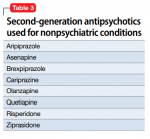pattismith
Senior Member
- Messages
- 3,990
Association between Chronic Pain and Alterations in the Mesolimbic Dopaminergic System
oct 2020
Seoyon Yang 1, Mathieu Boudier-Revéret 2, Yoo Jin Choo 3, Min Cheol Chang 4
Free PMC article
Abstract
Chronic pain (pain lasting for >3 months) decreases patient quality of life and even occupational abilities. It can be controlled by treatment, but often persists even after management.
To properly control pain, its underlying mechanisms must be determined.
This review outlines the role of the mesolimbic dopaminergic system in chronic pain.
The mesolimbic system, a neural circuit, delivers dopamine from the ventral tegmental area to neural structures such as the nucleus accumbens, prefrontal cortex, anterior cingulate cortex, and amygdala. It controls executive, affective, and motivational functions.
Chronic pain patients suffer from low dopamine production and delivery in this system.
The volumes of structures constituting the mesolimbic system are known to be decreased in such patients.
Studies on administration of dopaminergic drugs to control chronic pain, with a focus on increasing low dopamine levels in the mesolimbic system, show that it is effective in patients with Parkinson's disease, restless legs syndrome, fibromyalgia, dry mouth syndrome, lumbar radicular pain, and chronic back pain.
However, very few studies have confirmed these effects, and dopaminergic drugs are not commonly used to treat the various diseases causing chronic pain.
Thus, further studies are required to determine the effectiveness of such treatment for chronic pain.

oct 2020
Seoyon Yang 1, Mathieu Boudier-Revéret 2, Yoo Jin Choo 3, Min Cheol Chang 4
Free PMC article
Abstract
Chronic pain (pain lasting for >3 months) decreases patient quality of life and even occupational abilities. It can be controlled by treatment, but often persists even after management.
To properly control pain, its underlying mechanisms must be determined.
This review outlines the role of the mesolimbic dopaminergic system in chronic pain.
The mesolimbic system, a neural circuit, delivers dopamine from the ventral tegmental area to neural structures such as the nucleus accumbens, prefrontal cortex, anterior cingulate cortex, and amygdala. It controls executive, affective, and motivational functions.
Chronic pain patients suffer from low dopamine production and delivery in this system.
The volumes of structures constituting the mesolimbic system are known to be decreased in such patients.
Studies on administration of dopaminergic drugs to control chronic pain, with a focus on increasing low dopamine levels in the mesolimbic system, show that it is effective in patients with Parkinson's disease, restless legs syndrome, fibromyalgia, dry mouth syndrome, lumbar radicular pain, and chronic back pain.
However, very few studies have confirmed these effects, and dopaminergic drugs are not commonly used to treat the various diseases causing chronic pain.
Thus, further studies are required to determine the effectiveness of such treatment for chronic pain.

